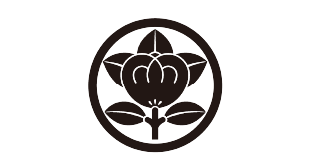Family-Crests
Overview
The “Maru ni Tachibana” crest is a traditional Japanese family emblem that signifies nobility and elegance. This crest features a circular design that encloses the Tachibana flower and leaves, symbolizing “eternity” and “prosperity.” The Tachibana tree, a native citrus plant, has been cherished since ancient times for its deep connection to Japanese culture and spirituality.
Historical Significance
The crest holds historical importance, particularly during the Sengoku period, when it was adopted by notable warlords. The Shimazu clan of Kyushu, one of Japan’s most powerful daimyo families, prominently used this crest as a symbol of their lineage. Warlords like Shimazu Yoshihiro and Shimazu Takahisa carried the emblem into battle, asserting their authority in southern Kyushu. Additionally, its sacred connotations made it a popular choice among retainers of Oda Nobunaga and various regional clans.
Symbolism
The “Maru ni Tachibana” crest reflects the ideals of unity, longevity, and prosperity. The circular frame signifies protection and family cohesion, while the Tachibana flower and leaves highlight natural beauty and the continuity of life. This emblem embodies the noble aspirations of the families who used it, blending elegance with deep cultural meaning.
Modern Usage
Today, the “Maru ni Tachibana” crest remains a revered symbol in Japan. It is found on ceremonial attire, family graves, and historical artifacts, preserving its cultural legacy. The crest’s timeless design continues to inspire admiration, connecting modern generations with Japan’s rich heritage.

